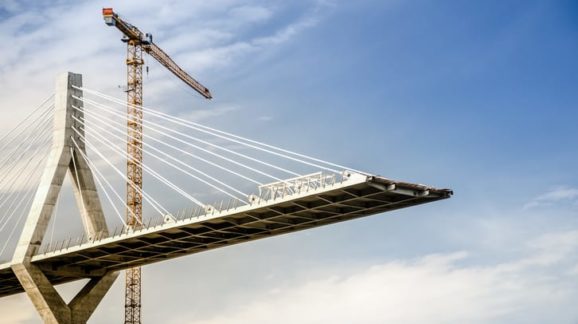Trump Executive Order to Expedite Project Approvals

 With the stated goal of helping boost the post-coronavirus economic recovery, President Trump on June 4 issued an Executive Order intended to expedite the federal approval process for major infrastructure projects. Using the emergency authority built into the National Environmental Policy Act (NEPA) and other relevant laws, “Economic Recovery from the COVID-19 Emergency by Expediting Infrastructure Investments and Other Activities” seeks to put people back to work by getting transportation, energy, and other big construction projects underway as quickly as possible.
With the stated goal of helping boost the post-coronavirus economic recovery, President Trump on June 4 issued an Executive Order intended to expedite the federal approval process for major infrastructure projects. Using the emergency authority built into the National Environmental Policy Act (NEPA) and other relevant laws, “Economic Recovery from the COVID-19 Emergency by Expediting Infrastructure Investments and Other Activities” seeks to put people back to work by getting transportation, energy, and other big construction projects underway as quickly as possible.
This effort comes on the heels of an equally sweeping May 19 Executive Order on regulatory relief, which resembled CEI’s #NeverNeeded campaign. This Executive Order solicited from each federal agency candidates for regulations to revise or repeal in order to reinvigorate the economy. Similarly, the latest Executive Order calls upon agency heads to find major projects currently under consideration—a process that takes 4.5 years on average—that can be approved immediately based on the analysis and review already conducted.
To be expected, environmental groups have raised undue alarms that the Executive Order is an environmental rollback. However, it should be noted that any and all approved projects, once up and running, will still have to comply with the substantive requirements of the Clean Air Act, Clean Water Act, and other applicable environmental statutes—including many excessively stringent ones. The only change is that these projects won’t have to wait for several more years to get approved.
In the case of energy infrastructure projects like natural gas pipelines, expedited approval could deliver two important benefits—the construction jobs building such pipelines can happen sooner, when the jobs are most needed; and the affordable energy provided by such projects can start benefitting homeowners and businesses earlier than otherwise. Several such projects have been held up by some states as a sort of back door climate policy, but this Executive Order (as well as other measures like the recent Clean Water Act section 401final rule) could help prevent such climate-related obstructionism.
Project opponents still hold some cards, namely litigation. For one thing, the administration will have to demonstrate to a federal court that the statutory emergency provisions were properly applied to the project at issue. Win or lose, litigation will slow things down.
Nonetheless, this Executive Order, along with other recent executive orders and final rules, represents perhaps the most ambitious effort of any administration to roll back federal red tape to strengthen the American economy.